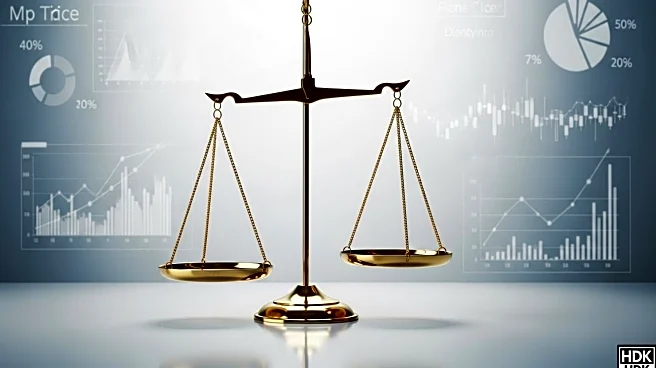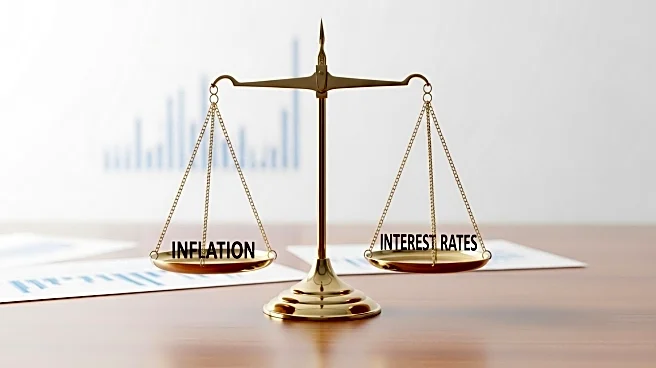What is the story about?
What's Happening?
The Federal Reserve's preferred inflation measure, the Personal Consumption Expenditures (PCE) inflation rate, rose to 2.7% in August, up from 2.6% in July. Despite remaining above the Fed's 2% target, the increase is not expected to deter the central bank from considering another interest rate cut at its October meeting. The recent inflation data follows the Fed's decision to cut interest rates by a quarter point last week, marking the first reduction since December 2024. Consumer inflation also increased to 2.9% in August, according to the Bureau of Labor Statistics' Consumer Price Index. The data suggests that while inflation remains a concern, the Fed may prioritize addressing employment risks in its upcoming policy decisions.
Why It's Important?
The rise in the PCE inflation rate is a critical factor in the Federal Reserve's decision-making process regarding interest rates. Persistent inflation above the target level could complicate efforts to stimulate the economy through rate cuts. However, the Fed's focus on employment risks suggests that maintaining economic stability and supporting job growth may take precedence over inflation concerns. The potential for further rate cuts could influence borrowing costs, consumer spending, and investment strategies, impacting various sectors of the economy.
What's Next?
The Federal Reserve is expected to continue monitoring economic indicators, including inflation and employment data, to guide its monetary policy decisions. The upcoming October meeting will be pivotal in determining whether the Fed proceeds with another rate cut. Market participants will be closely watching for signals from the Fed regarding its policy direction, as these decisions will have significant implications for economic growth and financial markets.
AI Generated Content
Do you find this article useful?













